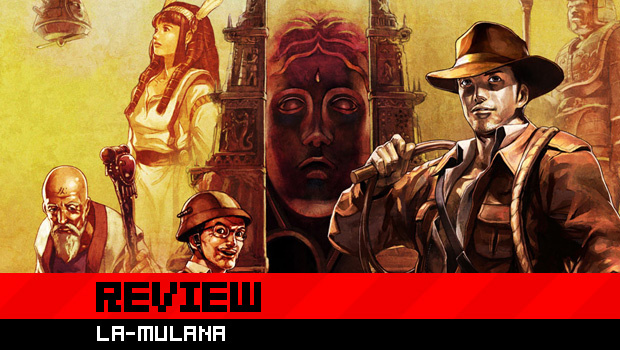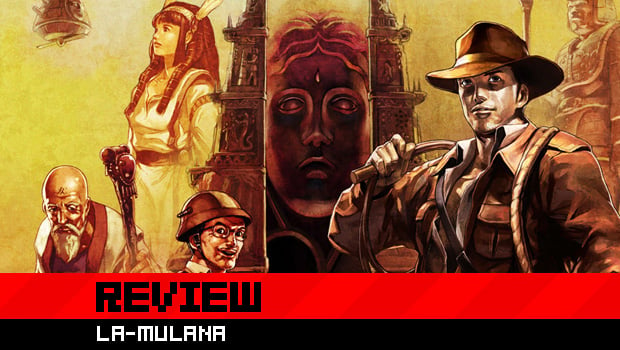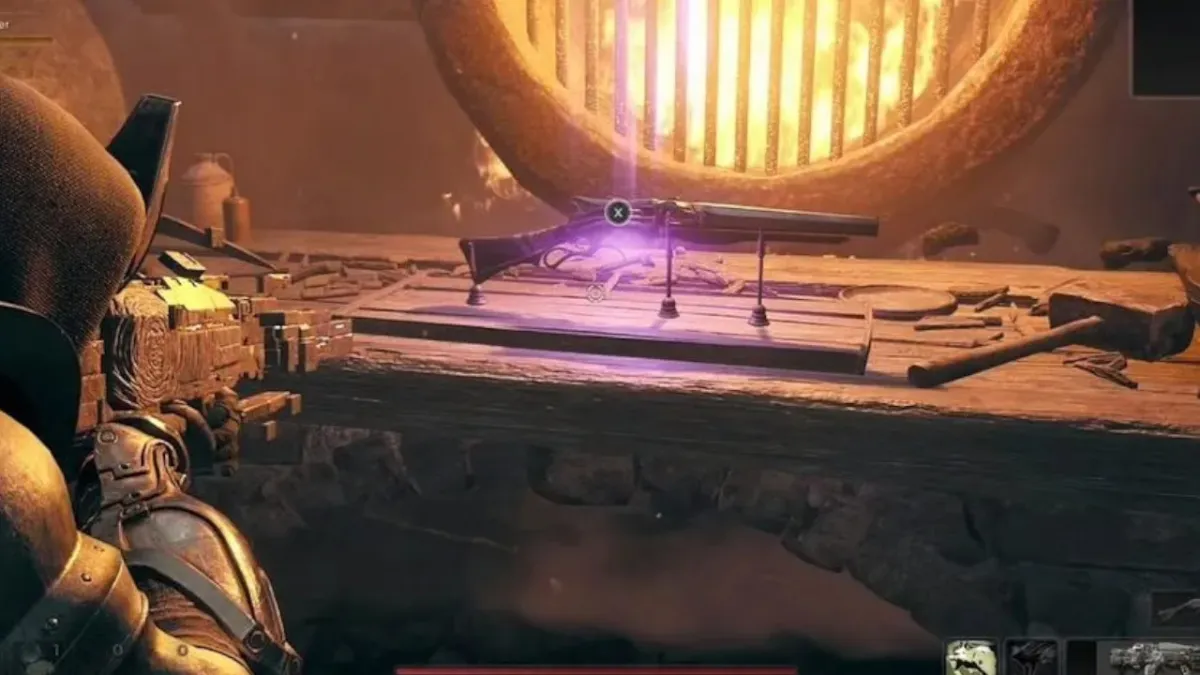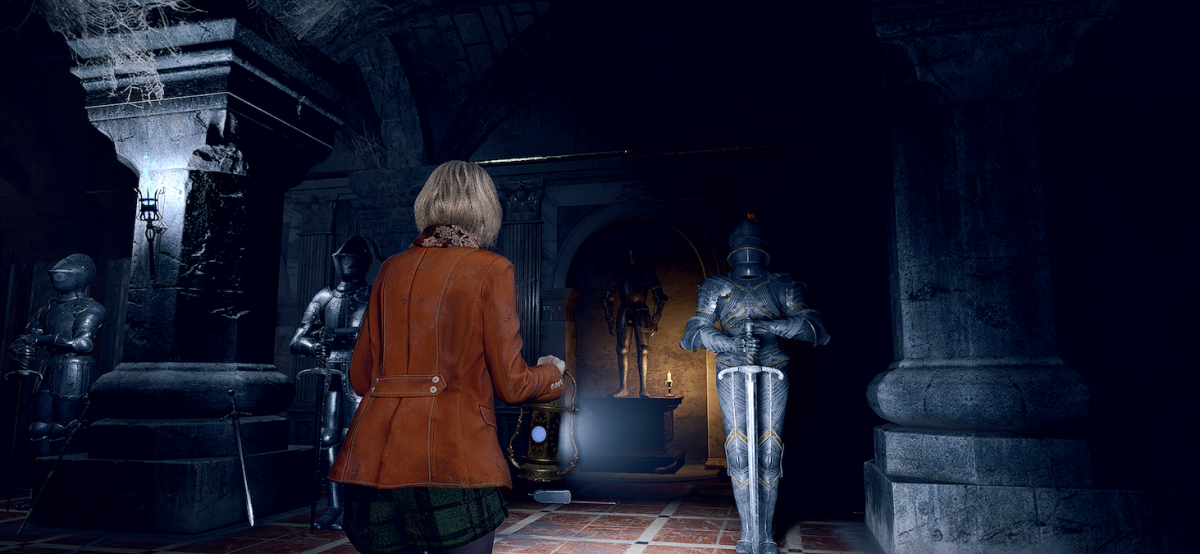Wow.
This is beyond a doubt the hardest game I’ve ever played.

La-Mulana (PC, WiiWare)
Developer: Nigoro
Publisher: Playism (PC) / EnjoyUp (WiiWare)
Released: July 13, 2012 (PC) / September 20, 2012 (WiiWare)
MSRP: $14.99 (PC) / 1000 Wii Points (WiiWare)
In many ways, La-Mulana is like the first cousin of Cave Story. Both are sidescrolling, action-adventure platformers developed over the course of five years. They were originally available as freeware in Japan and earned worldwide recognition following the release of English translation patches. Eventually, they received updated WiiWare remakes, which were then ported back onto the PC with some extra tweaks.
But while some people may consider Cave Story to be difficult in spots, it’s a frolic through the seven levels of the Candy Cane Forest compared to the utter brutality that is La-Mulana.
To be clear, I don’t mind when a game’s challenge derives from foiling formidable foes or mastering persnickety platforming perils. Give me Contra or Mega Man and I’ll take my lumps like a man. La-Mulana is certainly no slouch when it comes to doling out death like it’s going out of style, though its true challenge lies in attempting to solve the ruins’ myriad puzzles.
Your protagonist, Lemeza Kosugi, is an archaeologist off to explore the La-Mulana Ruins, the birthplace of all civilization. Naturally, the ruins are filled with traps and riddles meant to thwart any who dare set foot within. But unlike a game like Zelda in which puzzles don’t get more complicated than sliding blocks around, the puzzles here require the meticulous deduction and intuition of a real-life Indiana Jones.
La-Mulana has just as much in common with old PC adventure games as it does with your typical “Metroidvanias.” You uncover treasure during your journey, from dolls and staves to books and amulets, that may not serve an immediate purpose but will certainly be required later on. You also trigger switches that can effect an environmental change in a separate field — one of the main areas — than the one you are currently in. There’s a lot of shuffling, a lot of backtracking, and a lot of experimentation.
Throughout the ruins are stone tablets, each with an inscribed riddle that offers a clue to solving a certain puzzle somewhere else. Maybe the puzzle in question is a few rooms away, maybe it’s in a completely separate field. And since almost every room has a puzzle, and every puzzle an associated clue, chances are you won’t remember them all unless you write them down on an honest-to-God notepad. At a certain point in the game, the laptop that serves as Lemeza’s inventory gets upgraded with software that allows you to record 10 clues or NPC conversations plus an additional 10 following another software upgrade. Believe me, 20 slots is still not enough.

If you go into La-Mulana like any ol’ action game and don’t pay attention to literally everything, you will find yourself wandering the halls lost and confused for hours. You can’t take anything for granted — the faintest etchings on the walls could offer some hint as to what item must be used. You must treat every word, every artifact, every structure like it’s the most significant thing in the universe. Read those riddles with the same focus you would dedicate towards open-heart surgery.
This is assuming that you can even solve the riddles. Some are so vague or obtuse that you may try to convince yourself that you can solve the mysteries of the ruins without any hints. Of course, that would be a mistake, as the odds of stumbling across a room’s solution by chance grow slimmer and slimmer the deeper into the ruins you delve.
What’s so incredible about these puzzles is that, despite how infuriatingly impossible they seem, there is always going to be a clue. If you can’t find one, it just means you haven’t been looking in the right spots. The game wants you to get lost, wants you to throw your hands up in despair, yet it provides all the tools necessary for success if you just take the time to track them down. Learning the art of intense scrutiny might prove difficult for players who are accustomed to more expedited forms of gameplay.
Remember, this nontraditional brand of challenge is in addition to ball-busting murder at the hands of the ruins’ traps and guardians.

Lemeza controls like a slightly more nimble Simon Belmont. His primary weapon is an upgradeable whip, though there are other weapons to discover plus sub-weapons to supplement your main attack. When you jump in an arc, forward momentum will prevent you from turning around in mid-air, but if you jump straight up, you’ll have complete freedom of aerial mobility during your descent.
The key to survival in La-Mulana is “conservation” — item pickups are extremely limited. Sub-weapons require ammo, but enemies rarely drop any, so the only sensible way to keep a healthy supply is to purchase ammo from shops. On a related note, money is also limited. Aside from single-use coin chests, there are regenerating pots scattered about that similarly offer a one-time coin bonus, after which they’ll either grant you chump change or nothing at all. Should you need to buy an important tool and lack significant funds and you’ve been frivolously spending dough on extra ammo that you probably didn’t need, prepare to start farming for a looooong time. (However, there is a helper fairy later in the game that can improve the rate of item and coin drops.)
Many doors and locks are opened by placing a weight on a small brown dais. Some doors will remain open permanently, while others close after you leave the room. Weights can only be used once, so consider them another item for your shopping list. In order to preserve your weights, you have to consider whether there are alternate paths to areas locked out by daises. It doesn’t help that some daises actually trigger traps like rising spiked floors or inescapable boxes. In the latter case, your only option is to warp out of the enclosure or, should you have forgotten to acquire the Holy Grail item that allows for warping, to reset the game.

Conservation applies towards your health as well, as opportunities to restore your HP are few and far between. Enemies sometimes drop green experience orbs, and once you collect an amount equivalent to your current max HP, your health will be replenished. As you extend your max HP by acquiring Sacred Orbs, more experience orbs will be required, making it much less likely that you’ll be able to heal yourself at an opportune moment.
The only other way to refill your health is to dip in one of two hot springs: the first located on the Surface near your base camp, the second located in an ice cavern a few hours into the game. You’ll need to get into the habit of warping back to the Surface for your spa treatment before exploring a new field or fighting a boss. However, this strategy often presents a dilemma. With one exception, there is only a single warp tablet (which doubles as a save marker) in each field. If you haven’t found the field’s warp point and are in dire need of refueling, do you soldier on and hope that the warp is in the next room, risking death and loss of all your progress since your last save? Or do you retreat, heal, and save your file, only to have to endure the long trek back to where you previously were?
Standard enemies are, at worst, minor annoyances that don’t deal too much damage, but since health is such a crucial commodity, you don’t want act recklessly. Not when boss guardians are more than happy to send you on a first-class flight to the Elysian Fields. You have to actually find the guardians first, however. Even if you know which room one is located in, you’ll need to make its Ankh appear by solving some other puzzle in the field. Once the Ankh is revealed, you’ll need to locate the hidden Ankh Jewel and raise it in front of the Ankh in order to trigger the battle.

Each of the guardians is a towering wall of pain and that maliciously exploits Lemeza’s short attack range. You have to jump and maneuver as close as you can to their weak points — typically their heads — without accidentally grazing their bodies. These battles demand a balance of playing it safe and taking risks you wouldn’t normally consider. For instance, you might find that the best strategy is to suicide-dive the boss to score a few well-placed hits while taking damage yourself. Other times, you might want to endure a light attack from the enemy and use the subsequent invincibility frames to withstand an even more lethal onslaught, such as a screen-filling laser carnival.
Inevitably, after a few hours or even within the first hour, you will find your breaking point. Maybe you’ll be fighting the leviathan Bahamut, dying repeatedly because you can never evade his body slam, and the pressure of all the puzzles, all the traps, all the delirious running back and forth will finally take its toll. You’ll wonder why you are suffering so much yet accomplishing so little.
Why? Because despite everything I’ve just said, La-Mulana is a wonderful game.

I wouldn’t have endured so much torture if the journey itself wasn’t compelling. It’s such a rich and engrossing adventure, filled with more to see and do per square inch than many games offer in a meager six-hour runtime. La-Mulana may have been originally developed to recapture the spirit of retro gaming (particularly the Japanese age of MSX software), but the result is a true evolution to 2D sidescrolling action.
The original La-Mulana mimicked the limited-color, low-res imagery of the MSX, but this remake is dolled up in a 32-bit style reminiscent of games like Symphony of the Night. The teeny character sprites are adorable, while the gargantuan bosses are vigorous and imposing. As the in-game history describes La-Mulana as the cradle of all mankind, each field is appropriately inspired by the architecture of a number of ancient cultures — Greek, Maya, Egyptian, Japanese, Olmec, and so on — all rich in color and detail, accented by subtle effects like dust clouds and heat haze.
And the music! So fantastic! Each song is as complex and varied as a Michiru Yamane composition, never boring and never unsatisfying. You can spend hours pacing the same length of rooms, but the music will remain upbeat, driving you to persevere and rise above. I would even go as far as to say that this is my favorite soundtrack of the year thus far.
The are nearly 20 distinct fields to explore and an exhaustive list of treasures and items to discover. With so much content, a single playthrough can last roughly 20 hours, and that’s not including the equally exhaustive number of restarts due to Lemeza’s frequent meetings with the Grim Reaper. This is an adventure to end all adventures, one that is only just beginning at a point where similar games are just about to wrap things up.

That’s why it’s frustrating that the game is so damn difficult. If the only challenge to contend with was the familiar parade of precision platforming and unrelenting enemies, I wouldn’t feel so torn. Bosses giving you grief? All you have to do is practice, practice, practice until you’ve mastered the patterns. But when the very act of progression is a puzzle, broken down into an array of smaller, interconnected puzzles that are in turn broken down further, tapering off into wispy branches with little assistance as to which branch to address first, mere “practice” won’t do you a lot of good.
I want to blame the game. I want to blame Nigoro. Or maybe it’s my fault for becoming so complacent with the modern trends of excessive hand-holding and guidance. Maybe I’ve been trained to expect an explanatory prompt, to wait long enough until the solution falls into my lap. Perhaps I’ve been playing on autopilot for too long and needed a game like La-Mulana to slap me awake. It’s something to consider, though a review is not a place for such discussion.
A handful of players will pick up La-Mulana and fall in love instantly. It’ll be exactly the kind of cutthroat trial that they’ve always craved but could never experience. For most, the difficulty wall will simply be too high. It’s criminal to walk away from such a brilliant gem, which is why I endorse the use of wikis, maps, and guides. There’s no shame in getting a little outside help. In fact, I think it adds a meta element to the campaign. In a game about archaeological expedition, why wouldn’t you refer to the notes and directions of previous explorers? As long as you leverage these materials sparingly, you can transform your despair into enjoyment. The game will still be hard as balls, but it’ll feel much more manageable.

Beyond the seemingly insurmountable wall of challenge, La-Mulana is a brilliant title that exceeds in just about every category. Art, music, breadth of content, game length — La-Mulana gets the highest marks. But there’s simply no denying that the difficulty, as fair as Nigoro purports it to be, is a major deterrent. If you are willing to suffer, though, you will be blown away. I guarantee it.
[La-Mulana is available exclusively for purchase on Playism.]





